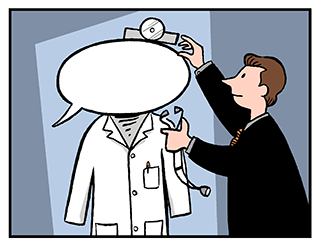Transfer

You shall not press down upon the brow of labor this crown of thorn. You shall not crucify mankind upon a cross of gold! — William Jennings Bryan, 1896
As the Institute for Propaganda Analysis explains:
Transfer is a device by which the propagandist carries over the authority, sanction, and prestige of something we respect and revere to something he would have us accept. For example, most of us respect and revere our church and our nation. If the propagandist succeeds in getting church or nation to approve a campaign in behalf of some program, he thereby transfers its authority, sanction, and prestige to that program. Thus, we may accept something which otherwise we might reject.
In the Transfer device, symbols are constantly used. The cross represents the Christian Church. The flag represents the nation. Cartoons like Uncle Sam represent a consensus of public opinion. Those symbols stir emotions . At their very sight, with the speed of light, is aroused the whole complex of feelings we have with respect to church or nation. A cartoonist, by having Uncle Sam disapprove a budget for unemployment relief, would have us feel that the whole United States disapproves relief costs. By drawing an Uncle Sam who approves the same budget, the cartoonist would have us feel that the American people approve it. Thus, the Transfer device is used both for and against causes and ideas. 1
When a political activist closes her speech with a public prayer, she is attempting to transfer religious prestige to the ideas that she is advocating. As with all propaganda devices, the use of this technique is not limited to one side of the political spectrum. It can be found in the speeches of liberation theologists on the left, and in the sermons of religious activists on the right.
In a similar fashion, propagandists may attempt to transfer the reputation of “Science” or “Medicine” to a particular project or set of beliefs. A slogan for a popular cough drop encourages audiences to “Visit the halls of medicine.” On TV commercials, actors in white lab coats tell us that the “Brand X is the most important pain reliever that can be bought without a prescription.” In both of these examples, the transfer technique is at work.
These techniques can also take a more ominous turn. As Alfred Lee has argued, “even the most flagrantly anti-scientific racists are wont to dress up their arguments at times with terms and carefully selected illustrations drawn from scientific works and presented out of all accurate context.” The propaganda of Nazi Germany, for example, rationalized racist policies by appealing to both science and religion.
This does not mean that religion and science have no place in discussions about social issues! The point is that an idea or program should not be accepted or rejected simply because it has been linked to a symbol such as Medicine, Science, Democracy, or Christianity. For example, imagine that your father reminds you “An apple a day keeps the doctor away” as he slips two apples into your lunch bag. Technically, this is a flawed use of the transfer technique; the popular saying links the fear of visiting the doctor to the benefits of eating fruit. However, the claim that apples are healthy is actually backed by medical research. If your father were to say, “A study recently published in Nutrition magazine found many health benefits from eating apples,” the linkage is appropriate.
The Institute for Propaganda Analysis has argued that, when confronted with the transfer device, we should ask ourselves the following questions:
- In the most simple and concrete terms, what is the proposal of the speaker?
- What is the meaning of the thing from which the propagandist is seeking to transfer authority, sanction, and prestige?
- Is there any legitimate connection between the proposal of the propagandist and the revered thing, person or institution?
- Leaving the propagandistic trick out of the picture, what are the merits of the proposal viewed alone?
References
1 Institute for Propaganda Analysis (1937) “How to detect propaganda,” Propaganda Analysis (2). Page 6.
